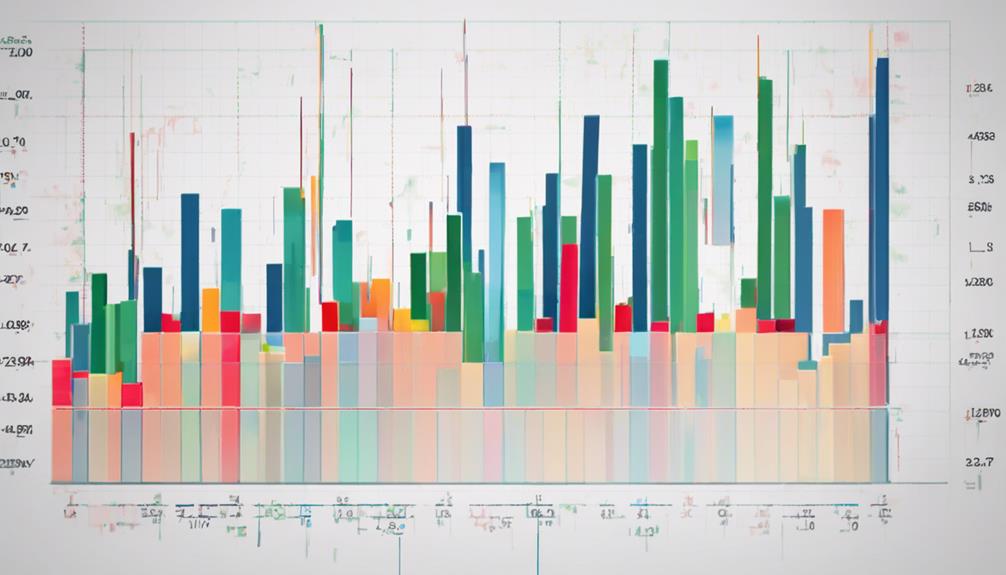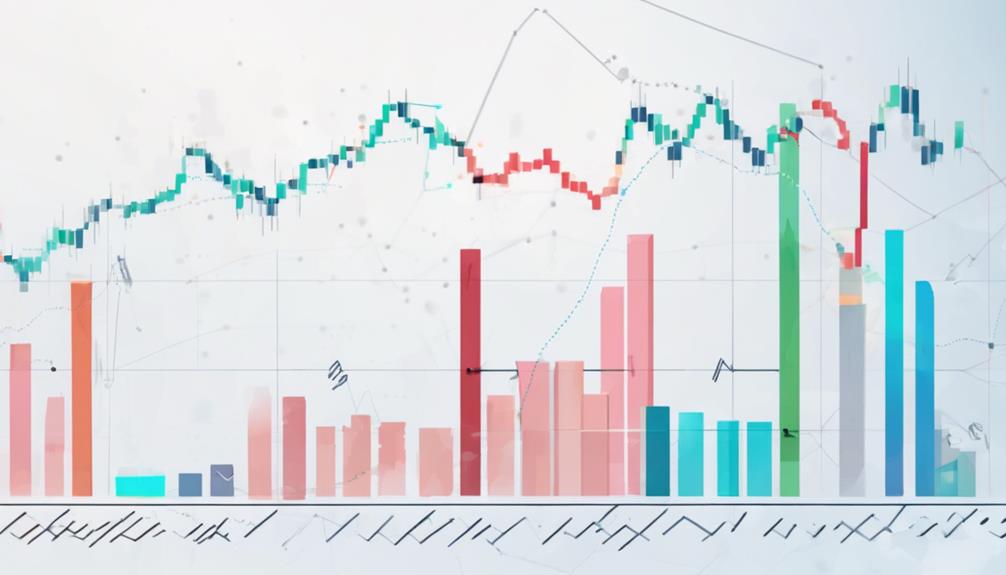In today's fast-paced trading environment, understanding volume-based indicators can be a game-changer for your investment strategies. As you navigate the complexities of the market, knowing how to interpret volume signals can provide valuable insights into potential price movements and market sentiment.
But how exactly can these indicators help you make more informed decisions in your trading journey? Let's uncover the practical applications and benefits of volume-based indicators, shedding light on how they can empower you to navigate the markets with confidence and precision.
Overview of Volume-Based Indicators
Volume-based indicators play a crucial role in analyzing market trends and behavior by utilizing trading volume data. These indicators, such as On-Balance Volume (OBV), Chaikin Money Flow (CMF), and Klinger Oscillator, offer valuable insights into market sentiment and potential reversals.
By examining the relationship between volume and price movements, traders can gauge the strength of trends and make informed decisions. These indicators are essential tools in technical analysis, providing traders with a quantitative measure of market activity and liquidity.
Understanding how to use volume-based indicators is paramount for traders looking to enhance their trading strategies and overall performance in the market. Incorporating these indicators into your analysis can help you stay ahead of market movements and identify profitable opportunities.
Calculation and Interpretation Methods

Moving from the overview of volume-based indicators, delving into the calculation and interpretation methods allows traders to gain a deeper understanding of how these indicators provide valuable insights into market behavior and trends.
On-Balance Volume (OBV) determines total volume flow by adjusting volume based on price changes, acting as a leading indicator to predict price shifts through volume trend analysis.
Chaikin Money Flow (CMF) evaluates money flow accumulation/distribution to pinpoint buying or selling pressure.
The Klinger Oscillator forecasts short-term trend reversals and strength by merging volume and price data to gauge volume force and trend direction.
Analyzing volume patterns, divergences, and trends through these indicators aids in making informed trading decisions and anticipating market movements effectively.
Practical Applications in Trading

To effectively apply volume-based indicators in trading, it's crucial to understand how these tools can be leveraged to enhance decision-making processes and optimize trading performance. When utilizing volume indicators, consider the following:
- Volume Weighted Average Price (VWAP): Incorporate VWAP to assess the average price a security has traded at throughout the day, providing insight into whether the current price is above or below this average.
- Chaikin Money Flow Indicator: Use this indicator to analyze the flow of money in and out of a financial instrument, helping identify potential buy or sell signals based on the volume of trades.
- Volume Profile: Utilize volume profile to visualize the distribution of trading volume over specific price levels, aiding in spotting significant support and resistance zones for more informed trading decisions.
Advantages and Benefits

When considering the advantages and benefits of incorporating volume-based indicators in your trading strategy, you gain a comprehensive understanding of market dynamics and potential opportunities for strategic decision-making. Volume-based indicators, such as those used in forex trading, enable you to make more informed decisions by validating price trends and spotting divergences that signal market shifts.
These indicators offer insights into market strength, momentum, and sustainability, enhancing your trading strategies. By utilizing volume-based indicators, traders can refine their intuition and stay ahead of market movements, thus maximizing their chances of success in the dynamic world of trading.
Embracing these tools can provide a competitive edge and empower you to navigate the markets with greater confidence and precision.
Limitations and Considerations

Considering the inherent limitations and crucial considerations associated with volume-based indicators in trading, it's imperative to navigate these factors with a discerning eye for accuracy and context. When using volume indicators, keep in mind the following:
- Volume indicators exhibit a lagging nature in reacting to price movements, which means they may not provide timely signals for traders.
- Be cautious of false signals that volume indicators can give in low liquidity markets, as these signals may not accurately reflect true market sentiment.
- Volume indicators don't offer direct information on the direction of price movements; therefore, they should be supplemented with other technical analysis tools for confirmation of trading decisions.
Can Volume-Based Indicators Enhance My Exploring Experience?
Volume-based indicators can greatly enhance your exploring experience by providing valuable insights into the market’s strength and direction. Understanding the functionality of volume indicators can help you make more informed decisions when navigating through different assets and securities, ultimately improving your overall exploring experience.
Frequently Asked Questions
How Do You Use a Volume Indicator Effectively?
To use a volume indicator effectively, you must analyze trading activity to gauge market liquidity and trends. Identifying volume patterns can help you confirm price movements and assess trend strength, aiding in strategic decision-making.
How Do You Read a Volume Profile Indicator?
To read a volume profile indicator, observe the peaks and valleys of volume at different price levels. High volume areas signify strong interest, while low volume areas indicate potential price turning points. Analyzing this data aids in decision-making.
What Is the Formula for the Volume Indicator?
To calculate the volume indicator, tally the total shares or contracts traded within a specific timeframe. This metric offers a precise measure of market activity. Traders can assess volume indicators across one or multiple trading sessions for comprehensive analysis.
How Do You Read a Balance Volume Indicator?
To read a balance volume indicator, observe if it rises with price increases and falls with decreases. Divergence between OBV and price movements can signal potential reversals. Understanding this indicator helps anticipate market sentiment and predict price changes effectively.
Conclusion
In conclusion, mastering volume-based indicators is key to navigating the complexities of trading. By understanding market liquidity, activity levels, and price movements, you can make more informed decisions and improve your trading strategies.
Remember, 'volume speaks volumes' in the world of trading, so pay attention to these indicators to stay ahead of the game and enhance your trading success.
Keep exploring and utilizing volume indicators to unlock their full potential in your trading journey.
